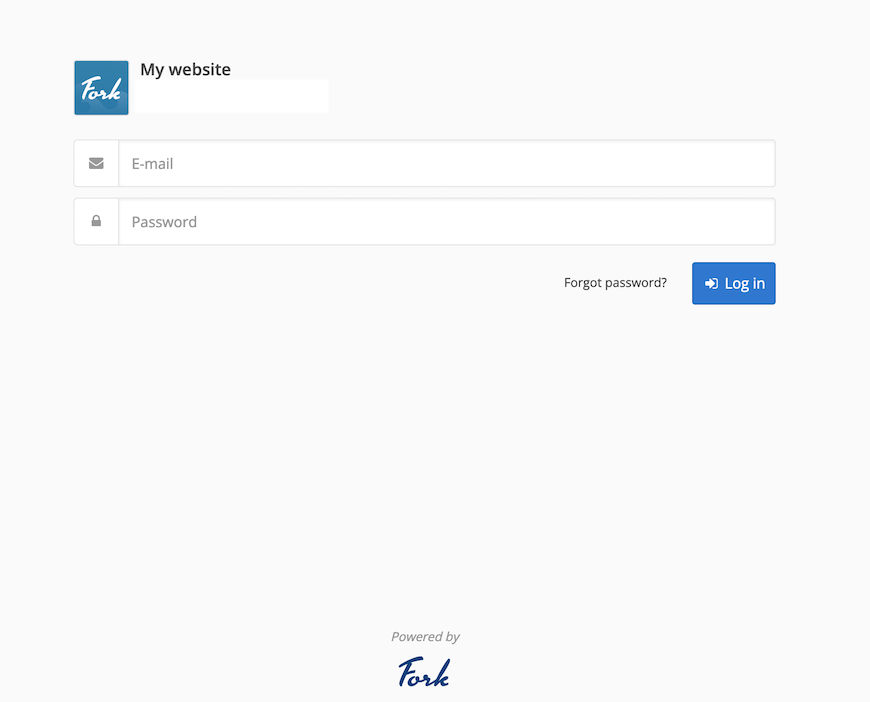How To Install Fork CMS on Ubuntu 22.04 LTS

In this tutorial, we will show you how to install Fork CMS on Ubuntu 22.04 LTS. For those of you who didn’t know, Fork CMS is a free open-source content management system (CMS) written in PHP and uses Symphony components. Fork CMS comes with many themes and apps like Banners, and Guestbook also supports many third-party extensions available to use.
This article assumes you have at least basic knowledge of Linux, know how to use the shell, and most importantly, you host your site on your own VPS. The installation is quite simple and assumes you are running in the root account, if not you may need to add ‘sudo‘ to the commands to get root privileges. I will show you the step-by-step installation of the Fork content management systems on Ubuntu 22.04 (Jammy Jellyfish). You can follow the same instructions for Ubuntu 22.04 and any other Debian-based distribution like Linux Mint, Elementary OS, Pop!_OS, and more as well.
Prerequisites
- A server running one of the following operating systems: Ubuntu 22.04, 20.04, and any other Debian-based distribution like Linux Mint.
- It’s recommended that you use a fresh OS install to prevent any potential issues.
- SSH access to the server (or just open Terminal if you’re on a desktop).
- A
non-root sudo useror access to theroot user. We recommend acting as anon-root sudo user, however, as you can harm your system if you’re not careful when acting as the root.
Install Fork CMS on Ubuntu 22.04 LTS Jammy Jellyfish
Step 1. First, make sure that all your system packages are up-to-date by running the following apt commands in the terminal.
sudo apt update sudo apt upgrade
Step 2. Installing LAMP Stack on Ubuntu 22.04.
Before starting this tutorial, the LAMP server must be installed on your server. If you do not have LAMP Stack installed, you can follow our guide here.
Step 3. Installing Fork CMS on Ubuntu 22.04.
By default, Fork CMS is not available on Ubuntu 22.04 base repository. Now run the following command below to download the latest stable version of Fork CMS to your Ubuntu system:
wget https://www.fork-cms.com/frontend/files/releases/forkcms-5.11.1.tar.gz
Next, extract the downloaded file using the command below:
tar -xvzf forkcms-5.11.1.tar.gz
We will need to change some folders permissions:
chown -R www-data:www-data /var/www/html/forkcms/ chmod -R 755 /var/www/html/forkcms/
Step 4. Configuring MariaDB.
By default, MariaDB is not hardened. You can secure MariaDB using the mysql_secure_installation script. you should read and below each step carefully which will set a root password, remove anonymous users, disallow remote root login, and remove the test database and access to secure MariaDB:
mysql_secure_installation
Configure it like this:
- Set root password? [Y/n] y - Remove anonymous users? [Y/n] y - Disallow root login remotely? [Y/n] y - Remove test database and access to it? [Y/n] y - Reload privilege tables now? [Y/n] y
Next, we will need to log in to the MariaDB console and create a database for Fork CMS. Run the following command:
mysql -u root -p
This will prompt you for a password, so enter your MariaDB root password and hit Enter. Once you are logged in to your database server you need to create a database for Fork CMS installation:
MariaDB [(none)]> CREATE DATABASE fork_db; MariaDB [(none)]> CREATE USER 'fork_user'@'localhost' IDENTIFIED BY 'your-strong-password'; MariaDB [(none)]> GRANT ALL ON fork_db.* TO 'fork_user'@'localhost'; MariaDB [(none)]> FLUSH PRIVILEGES; MariaDB [(none)]> EXIT;
Step 6. Configure Apache Virtual Host.
Now we create an apache virtual host file for Fork CMS:
nano /etc/apache2/sites-available/forkcms.conf
Add the following file:
<VirtualHost *:80>
ServerAdmin gdt@your-domain.com
DocumentRoot /var/www/html/forkcms
ServerName example.com
ServerAlias www.example.com
<Directory /var/www/html/forkcms/>
Options FollowSymlinks
AllowOverride All
Require all granted
</Directory>
ErrorLog ${APACHE_LOG_DIR}/error.log
CustomLog ${APACHE_LOG_DIR}/access.log combined
</VirtualHost>
Save and close the file, then enable the Apache virtual host file and rewrite modules with the following command:
sudo a2ensite forkcms.conf sudo a2enmod rewrite sudo systemctl restart apache2
Step 7. Secure Fork CMS with Let’s Encrypt.
First of all, you need to install Certbot to get an SSL certificate with Let’s Encrypt:
sudo apt install certbot python3-certbot-apache
Next, get your SSL certificate with Let’s Encrypt by following these steps:
sudo certbot --apache
You will need to follow the interactive prompt and install the certificate.
Let’s Encrypt certificates have 90 days of validity, and it is highly advisable to renew the certificates before they expire. You can test automatic renewal for your certificates by running this command:
sudo certbot renew --dry-run
Step 8. Configure Firewall.
Now we set up an Uncomplicated Firewall (UFW) with Apache to allow public access on default web ports for HTTP and HTTPS:
sudo ufw allow OpenSSH sudo ufw allow 'Apache Full' sudo ufw enable
Step 9. Accessing Fork CMS Web Interface.
Once successfully installed, open your web browser and access the Fork CMS installation wizard using the URL https://your-domain.com. You will be redirected to the following page:

Congratulations! You have successfully installed Fork CMS. Thanks for using this tutorial for installing Fork CMS with LAMP on Ubuntu 22.04 LTS Jammy Jellyfish system. For additional help or useful information, we recommend you check the Fork CMS website.